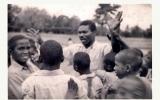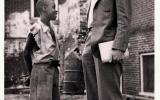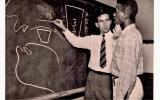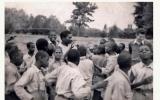CPS Unit Number 062-01
Camp: 62
Unit ID: 1
Title: Cheltenham School for Boys
Operating agency: AFSC
Opened: 12 1942
Closed: 4 1946
Workers
Total number of workers who worked in this camp: 26
-
 CPS Camp No. 62Cornelius A. Staley attempting to bring order. CPS social work dealing with juvenile delinquents. A CPS man organizing a game with boys from the second youngest cottage in the school. CPS men serve as cottage master, recreation and work project leaders.Digital Image from American Friends Service Committee: Civilian Public Service Records (DG002), Swarthmore College Peace Collection, Swarthmore, Pennsylvania
CPS Camp No. 62Cornelius A. Staley attempting to bring order. CPS social work dealing with juvenile delinquents. A CPS man organizing a game with boys from the second youngest cottage in the school. CPS men serve as cottage master, recreation and work project leaders.Digital Image from American Friends Service Committee: Civilian Public Service Records (DG002), Swarthmore College Peace Collection, Swarthmore, Pennsylvania -
 CPS Camp No. 62Cheltenham, MD School for boys. Juvenile delinquency, a major social problem arising from the war. A CPS social worker assigned to work at the school. CPS unit is an interracial one.Digital Image from American Friends Service Committee: Civilian Public Service Records (DG002), Swarthmore College Peace Collection, Swarthmore, Pennsylvania1943
CPS Camp No. 62Cheltenham, MD School for boys. Juvenile delinquency, a major social problem arising from the war. A CPS social worker assigned to work at the school. CPS unit is an interracial one.Digital Image from American Friends Service Committee: Civilian Public Service Records (DG002), Swarthmore College Peace Collection, Swarthmore, Pennsylvania1943 -
 CPS Camp No. 62Cheltenham, MD. School for Boys. CPS social work dealing with juvenile delinquency. A CPS instructor at Cheltenham School for Boys teaching a deaf mute to speak.Digital Image from American Friends Service Committee: Civilian Public Service Records (DG002), Swarthmore College Peace Collection, Swarthmore, Pennsylvania
CPS Camp No. 62Cheltenham, MD. School for Boys. CPS social work dealing with juvenile delinquency. A CPS instructor at Cheltenham School for Boys teaching a deaf mute to speak.Digital Image from American Friends Service Committee: Civilian Public Service Records (DG002), Swarthmore College Peace Collection, Swarthmore, Pennsylvania -
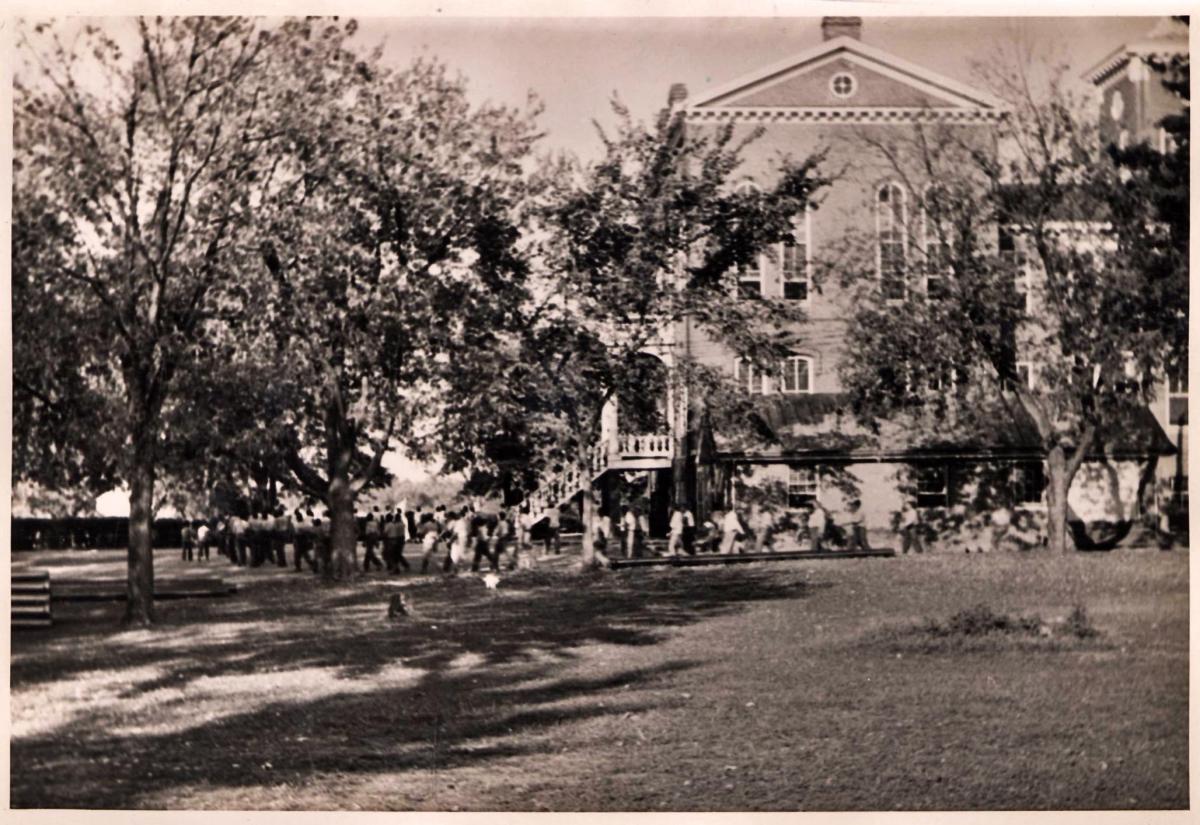 CPS Camp No. 62Cheltenham, Maryland School for Boys. Assembly - boys processing outside on school grounds with school building in background.Digital Image from American Friends Service Committee: Civilian Public Service Records (DG002), Swarthmore College Peace Collection, Swarthmore, Pennsylvania1943
CPS Camp No. 62Cheltenham, Maryland School for Boys. Assembly - boys processing outside on school grounds with school building in background.Digital Image from American Friends Service Committee: Civilian Public Service Records (DG002), Swarthmore College Peace Collection, Swarthmore, Pennsylvania1943 -
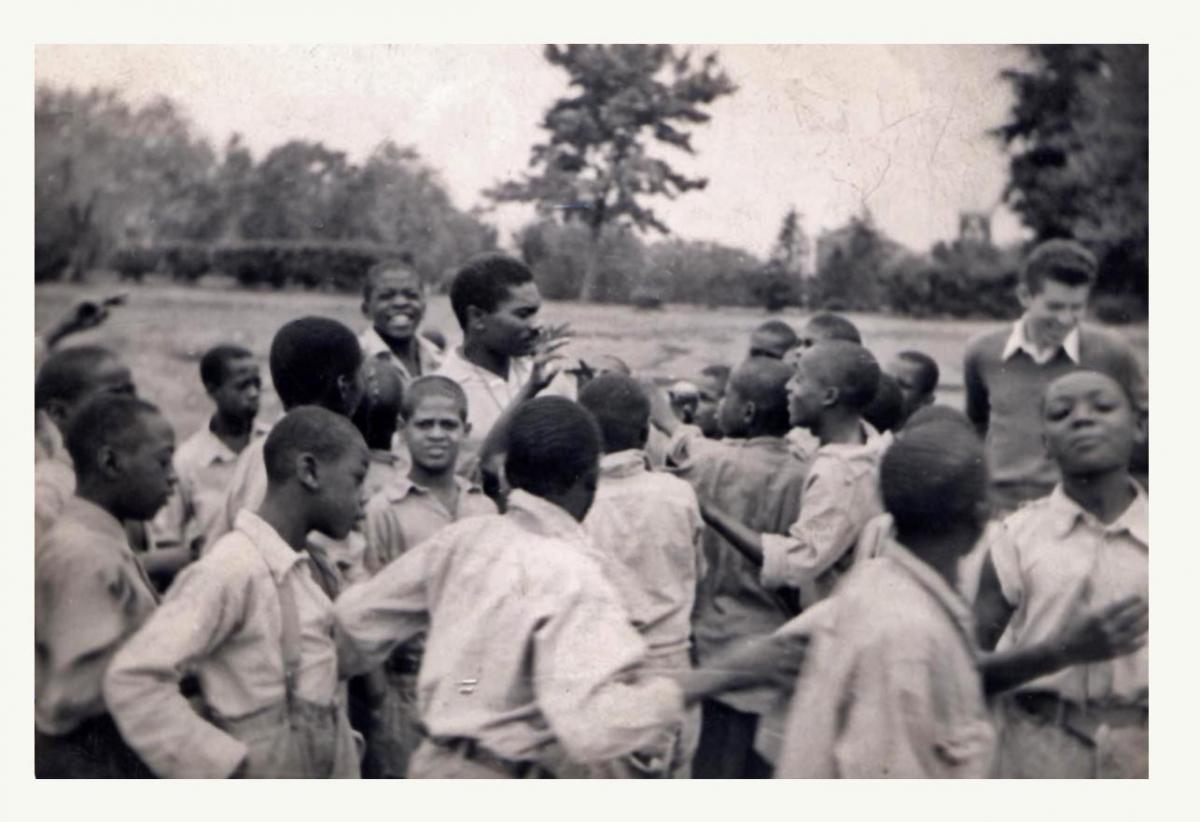 CPS Camp No. 62Cornelius Staley & Joe Carter organizing a game among the second youngest cottage of boys in the school (ages 11, 12, 13).Digital Image from American Friends Service Committee: Civilian Public Service Records (DG002), Swarthmore College Peace Collection, Swarthmore, Pennsylvania1943
CPS Camp No. 62Cornelius Staley & Joe Carter organizing a game among the second youngest cottage of boys in the school (ages 11, 12, 13).Digital Image from American Friends Service Committee: Civilian Public Service Records (DG002), Swarthmore College Peace Collection, Swarthmore, Pennsylvania1943
CPS Unit No. 62, a Training School unit at Cheltenham School for Boys in Cheltenham, Maryland operated by the American Friends Service Committee, opened in December 1942 and closed in April 1946. Men served as cottage masters, case workers and social workers, and performed other roles at the school.
Cheltenham School for Boys was located near Cheltenham, Maryland, a community devoted to horse racing and tobacco farming. The school, built on twelve hundred acres, eight hundred of which were suitable for farming and pasture, was twenty miles from Washington, D. C and forty-five miles from Baltimore.
The state took over the formerly private school which had been called House of Reformation from 1870 to 1937. Three hundred and thirty African American boys lived at the school.
The farm produced a large share of the food for the school and for the cattle herd of seventy to eighty cows.
Boys at the school worked in agricultural production, as well as in the laundry, shoe shop, and the tailor shop.
The physical plant included an administration building, six brick cottages housing more than three hundred African American boys, a new gymnasium, a new hospital, heating plant, a dairy barn, a mule barn, ten modern poultry houses, a feed storage shed, and some hog houses. The well maintained grounds included spacious lawns and attractive flowers and shrubs.
Director: John Hanks, Glenn Ogden, Joseph Franklin, Neal Staley
As of January 1943, fifteen men constituted the unit. The camp increased to twenty-two in early 1943, one a married man.
As a group, the men were well educated, the largest portion having completed a college degree, while some had taken graduate school work or completed graduate degrees. The group came from thirteen different states. They reported previous work experience as social workers, recreation workers, teachers and school administrators, camp counselors, graduate assistants, play ground worker and cook, professional musicians, state highway department worker, and an accountant with General Electric.
They reported a variety of denominational or other religious affiliations when entering CPS, or none at all. Several reported affiliation with Friends or other mainline denominations. One was a Christadelphian.
The majority of the CPS men served as cottage masters while others served as cook, accountant, psychologist, intake workers, case workers, social workers, recreation worker, night hospital attendant, and a night watchman.
The staff had been mostly white until Superintendent Thomas arrived. He was able to change the mix to sixty percent African American. He had promoted racial equality within the activities of the school board, which included both black and white members who had been segregated previously for dining, meetings and other board activities.
While there, the CPS men integrated the dining room for black staff and one CPS man lived with several black staff.
Men in the unit took courses at Howard University in the social work department. Faculty taught Case Work and Juvenile Delinquency at Cheltenham.
While the unit men believed in racial integration, they recognized the power of entrenched history, mores and culture. They discussed the effects of their withdrawing from the unit as a statement of opposition to segregation. In the end, they decided to remain and work from the inside using a Gandhi-like approach to begin to change practices.
Superintendent Thomas supported the goal of racial equality, and had been able to make some changes during his tenure. On occasion, however, a man would find that he could not live within the system. After two weeks in the unit, one man left in opposition to the racial segregation within the staff on November 26, 1942.
The men participated in athletic contests between school league champions and All-Stars, the team on which CPS men and other staff played. They played basketball with the staff and students.
The Cheltenham Newsletter of March 1, 1943 reported that Charles Butcher, a cottage master, had left the unit on January 22 at the request of Superintendent Thomas. Representatives of the National Service Board of Religious Objectors, AFSC, and Legal Aid, got involved.
Very concerned about the suddenness and manner in which Thomas acted, CPS men expressed their views and added their regret that they had not been aware of the conflict earlier. Believing that pacifists needed to wade into the midst of conflict to negotiate resolution, they sought mutual discussion.
Thomas acknowledged his action was perhaps too swift and agreed to the men’s suggestion that in the future, whenever CPS personnel were causing problems, he would consult with a committee of three CPS men and the Assistant Director to probe possible means of resolution. The Unit expressed its belief that Thomas was responsible for the conflict. They sought to arrange for Butcher to resign, rather than “being blackballed by Selective Service”. (Cheltenham Newsletter p. 5)
COs worked to change the standard of care in the school. They recognized that the regular staff cared for the boys, and that antiquated measures of brutality were no longer in use. Yet COs were frustrated that much of their effort was largely custodial. Without equipment the unit could not carry out the kind of recreation program that could enrich the quality of the boys’ lives. Some boys did not own adequate shoes to participate in hikes. CPS men highlighted the need for shop and other training classes to increase the boys’ future potential for usefulness, as they were committed to assisting the boys to return to society.
Cheltenham Newsletter, Vol. I:1 (January 1, 1943); Vol. 1:2 (March 1943)in the Swarthmore College Peace Collection, American Friends Service Committee: Civilian Public Service Records (DG002), Section 3, Box 14.
See Alex Sareyan, The Turning Point: How Persons of Conscience Brought About Major Change in the Care of America’s Mentally Ill. Scottdale, PA: Herald Press, 1994.
For an in depth history of conscientious objection in the United States, see Mulford Q. Sibley and Philip E. Jacob, Conscription of Conscience: The American State and the Conscientious Objector, 1940-1947. Ithaca, NY: Cornell University Press, 1952.
Swarthmore College Peace Collection, Camp publications database.
For more in depth treatment on the mental hospital and training school units, see Steven J. Taylor, Acts of Conscience: World War II, Mental Institutions, and Religious Objectors. Syracuse, NY: Syracuse University Press, 2009.
